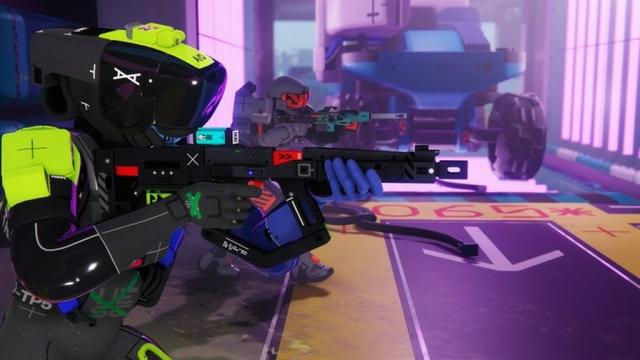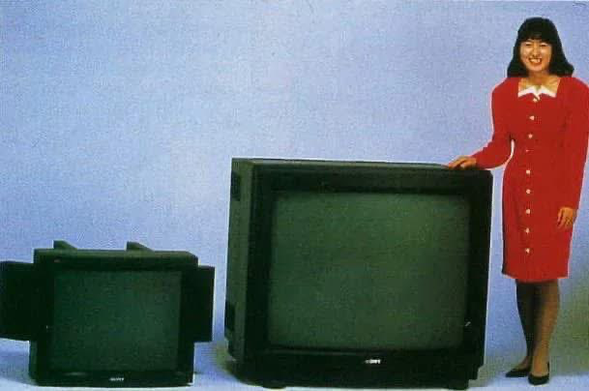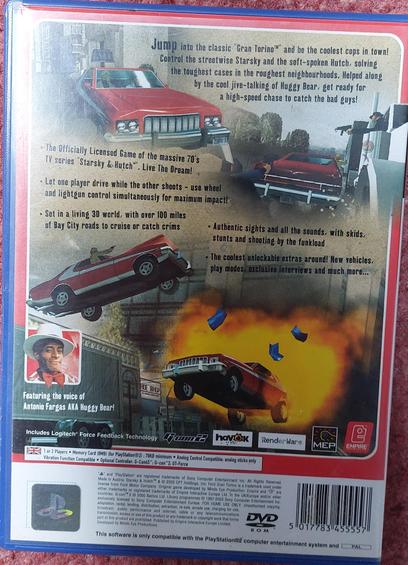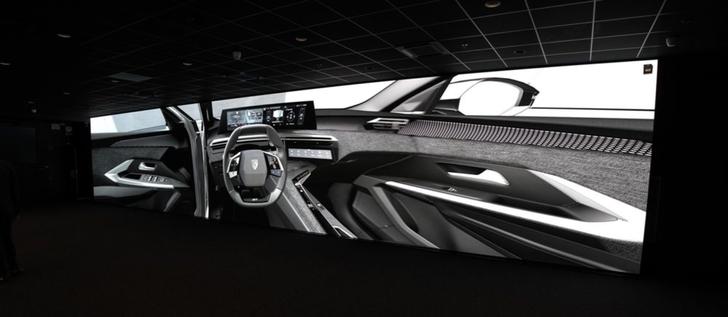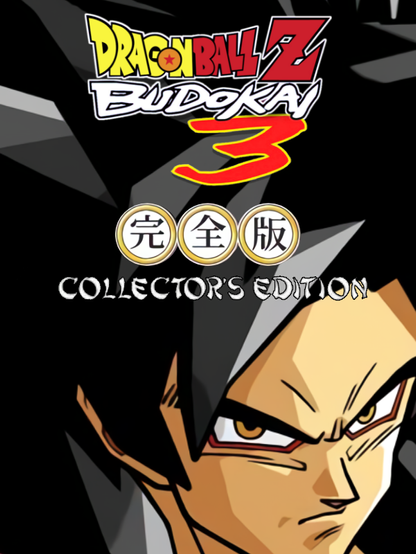#Sony
~ Seneca
#Verona #Italia
.
.
.
#SONY #A100
#architecture #photography #Italy #Europe #gooutside #travel #oldworld #old #lightroom #exploration #goexplore #wanderer #quote #success
『トワと神樹の祈り子たち』オープニング映像 | PlayStation®5
https://www.youtube.com/watch?v=86kEeCOiYyM
#youtube_PlayStationJapan #プレイステーション #プレステ #PlayStation #PS #Vita #PS4 #Game #ソニー #sony #SIE #ソニー_インタラクティブエンタテインメント #プレステ公式 #PlayStation_4 #psjapanizGN1LwfH8XME4mP #PS5 #PlayStation_5
『マインクラフト』「Chase the Skies (チェイス・ザ・スカイ)」公式トレーラー
https://www.youtube.com/watch?v=DTGMdqUiYTg
#youtube_PlayStationJapan #プレイステーション #プレステ #PlayStation #PS #Vita #PS4 #Game #ソニー #sony #SIE #ソニー_インタラクティブエンタテインメント #プレステ公式 #PlayStation_4 #psjapanizGN1LwfH8XME4mP #PS5 #PlayStation_5
Marathon officially delayed, not sprinting to release
Insert pun about Marathon's game development timing here
https://www.sidequesting.com/2025/06/marathon-officially-delayed-not-sprinting-to-release/
#News #bungie #marathon #playstation #PS5 #sony #SonyInteractiveEntertainment
Looks like Bungie and #Sony have delayed the rather universally hated #Marathon 'reboot' (hard term to use, since it has nothing to do with their classic, old, #PCGaming single-player titles of that name)
It is now 𝘥𝘦𝘭𝘢𝘺𝘦𝘥 𝘪𝘯𝘥𝘦𝘧𝘪𝘯𝘪𝘵𝘦𝘭𝘺
Terrible reviews of their closed Alpha tests, a shitty account by an artist where Marathon displayed stolen art assets, it's not hard to see why this has been delayed
https://www.forbes.com/sites/paultassi/2025/06/17/bungie-has-delayed-marathon-indefinitely/
For comparison, the #Sony #PSP version also recorded from real hardware (PSP-2004): https://youtu.be/xwDV3oUHekE
I kid you not, #Xbox is making the right moves here.
And I no longer think the PS6 should be at the top of #Sony 's mind.
They NEED to fast-track a native gaming handheld EXPEDITIOUSLY.
Playing my games anywhere is SIGNIFICANTLY more important than my game looking prettier.
#gamingsky #gaming #🎮
RE: https://bsky.app/profile/did:plc:7i4ym7itcyzr33p46qji7g4s/post/3lrsxyvtrgc2m
📍Alexander Muir Gardens, Toronto, Canada
#photography #travel #travelphotography #sony #toronto #canada #goldenhour #light
“The Edward Youde Aviary in Hong-Kong Park”
The Edward Youde Aviary (尤德觀鳥園) is a 3,000-square-metre (32,000 sq ft) aviary built over a natural valley at the southern corner of Hong Kong Park, which is located in Central at the bottom of the north eastern slope of Victoria Peak in Hong Kong. The Edward Youde Aviary, largest in…
🔎 https://nicolas-hoizey.photo/photos/the-edward-youde-aviary-in-hong-kong-park/
📅 8 August 2015
📸 Sony RX100 III
🎛️ ISO 320, ƒ/6.3, 1/30 s
#TravelPhotography #Asia #HongKong #Photography #Sony #RX100Mark3
#35 #35mm #film #filmisnotdead #kodak #portra #portra400 #dog #camp #cali #california #outdoors #carcamping #overlanding #sony #a6300 #longexposure #milkyway #nightsky #stars
Starsky & Hutch.
Fire up the Striped Tomato, dial in some classic 70's funky music on the radio, & chase those bad guys down!
The game features the actual voice if Huggy Bear, Mr. Antonio Fargas.
Jennifer Love Hewitt Calls Out Killer With Iconic Line in New ‘I Know What You Did Last Summer’ Sequel Trailer
#MovieNews #Movies #FreddiePrinzeJr #IKnowWhatYouDidLastSummer #JenniferLoveHewitt #KevinWilliamson #RyanPhillippe #Sarahmichellegellar #Sony
#Canon PowerShot V1 und #Sony ZV-1 II - gleich zwei kompakte Kameras sind neu am Start. Beide haben so ihre Vorzüge, Genaueres dazu hier im Test. https://winfuture.de/videos/Hardware/Canon-PowerShot-V1-vs.-Sony-ZV-1-II-Zwei-Kompakte-im-Vergleich-27602.html?utm_source=Mastodon&utm_medium=ManualStatus&utm_campaign=SocialMedia
History rhymes
The more things change, the more things stay the same. I don’t subscribe to the idea of history repeating itself. Instead, it rhymes. Certain kind of events keep happening generationally, and the whole hundred years cycle seems to have a point to it. That’s enough generations to go through some hardship, who has children seeing what happens, who can’t really get it through with the next generation, and then we lose the point of connection with people and events. Rarely people look at history and learn from it. School teaches as about history, and that’s where we usually stop. That’s good enough. However, politicians and businessmen should learn from history. That changes the game drastically. Resorting to the way of thinking technological and social advancements somehow refute or disvalue the past successes and mistakes.
Things change constantly even if we don’t notice it ourselves. A lot of things don’t matter to us, and we’re lulled that the world is an unchanging place to a certain extent. Take Russia’s invasion of Ukraine as an example. After the Berlin Wall and Soviet Union fell, that was seen as a certain point where history ended. The Western World would include Russia, as it was seen the democratic change in the country would make all things better. It was a march for all things good. This didn’t happen. A nation and culture going through a shock treatment of sorts, freeing industries and economy from the socialist stranglehold into Russian version of capitalism, but Yeltsin’s government didn’t implement rules and regulations that would direct the change. Instead, the oligarchs would sweep government issued vouchers (that could’ve been traded for shares of a company, deposited in mutual funds, sold or exchanged) from people who didn’t know investing and owning stocks worked, privatizing Russia’s industries to a large extend under their own names. Not that the government could’ve done much to prevent this, they didn’t have the resources or the knowhow.
Fast-forward to 1998 when the Russian government went through a financial meltdown partly how to oligarchs kept fighting with each other. Russia never had a chance with democracy or proper capitalism. The change was too fast and unregulated, letting people who knew how to game the system take advantage of others and thus screwing up the whole pot for everyone. With Putin in the big seat after Yeltsin, the New Millennium saw oligarchs being chased out of Russia, or killed, as a class. His autocracy and direction promised Russian people better living. Under Putin, Russia is a democracy in name only. His long-term leadership has the long cultural aftertaste of the tzars, and in recent years it has gained the poisonous tinge of leader worship in fashion of Stalin.
Despite the recent history of Russia, and the 2014 Annexation of Crimea, Western powers believed Russia to be a benevolent power that was going toward good for all through hard patches. Especially European powers believed there’d be no large-scale war in Europe anymore, but here we now are. Europe’s defences are largely scuffed, major centre powers were reliant on Russian gas for energy while downsizing their nuclear power, and then the Middle East powder keg began to shake again. People know about the history Russian and Middle East history, but only a few would’ve voiced out loud how we’re going to see the shit hitting the fan. We live through history every day. If you look under the crust of it all, we always live in interesting times. Not necessarily directly related to us in any manner, but the psychohistorical forces are working onwards each day. Some work hard to be on the right side of history, but in the moment of things taking place, there is no right or wrong side. That’s for the future generations to decide with (hopefully) better hindsight. They could be completely screwed by the historians interpreting events and people wrong, politicians intentionally changing the story to fit certain narratives to make them and the people feel better.
The whole SARS-Covid-19 Pandemic is an example where this happens. The amount of first-hand anecdotes historians will have to go through in the future is immense thanks to the social media. Then you have all the cases where politicians and the mainstream mass media told the people you wouldn’t get the virus if you were vaccinated. Of course, that’s not how vaccines work; they give you better resistance, but you’ll still catch the virus and can spread it around. Suspicions about the vaccines themselves were raised, seeing they didn’t go through any of the long-term testing other vaccines had to go through. No governing body was ready for the pandemic, and now that we’re at a point where its endemic, the global response was lacklustre.
The idea of global pandemic had been something that belonged in the realms of fiction. Very few people were alive, who had gone through the Spanish Flu, or the Great Influenza Epidemic. We know about it, but no government had anyone who had learned from it. There were no protocols to rely on, no people who had expert knowledge on what to do or how to enact whatever policies. People just did what they thought was the best, with some taking the advantage of the situation, as usual.
How does this reflect on the general motif of the blog? Entertainment doesn’t really change, it reflects the times and cultures it is created in. A parody of the ruling class made in the Ancient Greece has the same pushing power as the modern late-night comedy show dissing whomever is the in the Big Chair. Games naturally are there to offer friendly competition.
Video and computer games are still a relatively young media, but it has already seen a generational change once or twice. Much like how some people can’t stand black-and-white movies or read books that have old-fashioned language, there is a generation that can barely tolerate games that don’t have polygons. First and Second Generation of consoles are outright dismissed as unplayable junk. Quality of life is a must for everything to streamline the experience, which in some cases means cutting out part of the play. I’m looking at you, Monster Hunter.
The US Video Game Crash of 1983 has been exaggerated (mainly by US video game historians) as it had no real effect on the European or Asian markets, where consumers were buying different kind of machines. Often flooding the market with lousy games and rising interest in personal computers are cited as the main reasons why the Crash took place, but rarely the core reasons are pin pointed. The one point I want to put a pin on is how all the suits pushing for more games at a lower quality weren’t players themselves. They understood making money on video games in then-current paradigm, but not how to sustain the market properly. When you’re looking at the numbers, you often forget the people. You may understand what sells, but not why it sells or how to evolve the market. That only leads to weakened state, where you’re open for competition to disturb the market with a new product. In Nintendo’s case, kick the market back into action in the US, while staying in the second place in European markets.
Currently, the major console manufacturers are in a similar position, where they’re running on investor fumes and chasing an unchanging market. Nintendo must rely on their souped-up handheld now to carry them all the while Sony’s porting all their possible system sellers to other platforms and Microsoft has all but waved a white flag on the console business. A competitor could come from the woodworks and offer a home console at an affordable price with attractive exclusive titles, the lifeblood of console gaming. Electronic gaming is so safe nowadays, nobody is taking risks or chancing to kick the industry into a new curve that might excite customers. None of the Three Big Ones have leadership that understands their customers or play games themselves. At its core, the ’83 American Video Game Crash was because of corporate complacency and unwillingness to have customer-driven approach. Then again, both Microsoft and Sony seem to be bending out of the race
Gaming won’t crash a second time, however. Much like how computer gaming got its rise during the Crash in the US (in Europe, micro-computers were already trending over US consoles, with Sega later upping the stage by offering a cheaper and more accessible alternative than its supposed main competitor, Nintendo), modern gaming is rhyming with the small single-developed computer games of the era.
More than a handful of remarkable games were developed by a small team of enthusiastic people working toward their dream. Ultima and Wizardry, the mainstay examples were developed by what’d be called now as indies. Even if the console market crashed, PC gaming kicked off to a whole new start, leading to multiple manufacturers to compete with their own hardware. Atari’s consoles may have been a footnote in the European market on the grand scale, but the Atari’s computers’ rivalry against the Commodore Amiga had its own system war worth talking about one of these days.
The interest in indies hasn’t vaned since the term was coined sometime in the ‘00s. Just the contrary, indies have become the place where people are able to find far more interesting and daring games that big companies aren’t willing to entertain a thought of. Hence, quite many voices says the most interesting games are now found in the indies-sphere. Some claim to have abandoned Triple A games altogether in favour of indie titles. Not just because they’re more interesting, but also because they’re cheaper and often better optimized.
History rhymes in gaming. I’ve seen a steady rise of want for games that are distilled play. People who played one game for hundreds of hours are now looking for games that are shorter and meatier. People want games that have the arcade spirit, games you can get quickly in, have dense play, and you can get quickly out. Life changes. As a kid or a teenager, you’ve got all the time to walk around in a RPG that’s mostly walking around, a hot-air game. After you start getting responsibilities, work starts to take time, kids roll around, and suddenly you find yourself an adult, games fall behind in priority. That’s only natural, but you can’t really let go of a loved hobby. So, games that pack a punch become more valuable. Mega Man 11 was a great entry, because it wasn’t a hot-air game. It was all play, like Classic Mega Man should be. Arcades as a place may have gone the way of the dodo, but the need for games that have the same function has never gone away.
There is a market for console gaming. Sega’s and Nintendo’s mini-consoles sold out fast, necessitating additional production runs. Sony’s mini-PlayStation lingered on the shelves a bit longer, mostly due to the bad choices in its design and game selection. The current state of console gaming is waiting for some company to disrupt it. I know there are Sega diehards who would like see their return to the home-hardware business, but Sega has largely been a Red Ocean company when it came to consoles. One of the reasons why they had lacklustre success in Japan compared to US and Europe, which the Sega of Japan heads didn’t really understand. Sega’s innovation in the arcades never really translated into innovation with consoles, even when they had the best D-Pad in the industry up until the Dreamcast. Apple probably won’t try consoles again thanks to the failure of the Pippin. Google showing how big money can’t really net you a workable console either, especially when you’re tying it into something crippling like cloud service.
Console gaming fails when the companies behind the consoles are failing to deliver. Nowadays, all the consoles are dumbed-down PCs, Xboxes the most. When all systems share the same library, none of them is unique. Nintendo still has an edge in this regard, but even exclusives will carry them only so far. New physical game carts that function as keys to game downloads and customers not even owning their consoles according to their TOS are all steps toward the customer not owning their hardware and software anymore. At some point, anti-consumer antics will come home to roost and then there’s hell to pay. I keep saying exclusives matter with consoles, but at some point the scales will tip to the opposite direction and only sycophants will pay for lesser value hardware and software. History will rhyme at some point, and if console companies don’t realize it, someone else will be taking the top spot. Big things happen and change will take place in your lifetime. It’s just a matter of time. The harmony of things will get disrupted.
#computerGames #design #electronicGames #games #gaming #microsoft #Nintendo #sega #Sony #videoGames #videogames
~ Steve Maraboli
#Verona #Italia
.
.
.
#sony #alpha
#architecture #photography #Italy #Europe #gooutside #lightroom #blackandwhite #monochrome #bwphotography #quote #humor #exploration #goexplore #wanderer #bw #church #old #chiesa
Stellantis stawia na technologię Sony w swojej paryskiej siedzibie
Grupa motoryzacyjna Stellantis, zrzeszająca 14 marek samochodowych, wybrała technologię Sony Crystal LED do swojej flagowej przestrzeni „Dome” w Paryżu.
Nowa ściana wideo o wymiarach 16 na 3 metry zastąpiła dotychczasową, dziesięcioletnią instalację, wyznaczając nowy standard w jakości prezentacji wizualnych dla jednego z czołowych graczy branży motoryzacyjnej.
Paryska przestrzeń „Dome” pełni kluczową rolę w działaniach koncernu – to właśnie tam odbywają się warsztaty Design Europe, wewnętrzne prezentacje dla menedżerów marek oraz wydarzenia medialne. Celem modernizacji było zastąpienie wysłużonego projektora rozwiązaniem o ultrawysokiej wydajności, które pozwoliłoby na precyzyjne odwzorowanie najdrobniejszych detali prezentowanych modeli, takich jak kolory, tekstury i wykończenia, tworząc przy tym natychmiastowy efekt „wow”. Projekt był ambitny, zwłaszcza ze względu na techniczne wyzwania, w tym wysoki poziom oświetlenia otoczenia, potrzebę idealnego odwzorowania barw oraz wymóg absolutnej niezawodności.
Po publicznym przetargu, w którym porównano oferty trzech dostawców, Stellantis wybrał wyświetlacz Sony Crystal LED z serii BH, model BH15D, przeznaczony do pracy w bardzo wymagających warunkach.
Kluczowe cechy, które zadecydowały o wyborze technologii Sony to:
- Wysoka jasność (1700 cd/m²), która zapewnia doskonałą widoczność nawet w pomieszczeniu z dużą ilością naturalnego światła.
- Powłoka antyrefleksyjna, która eliminuje zakłócenia wizualne, pogłębiając czerń i zwiększając immersję.
- Wierne odwzorowanie kolorów, co było kluczowe dla zachowania wizualnej tożsamości marek. Zapewnia to procesor obrazu X1 for Crystal LED oraz technologia 22-bit Super Bit Mapping.
- Imponujący rozmiar, który pozwala na wyświetlanie pojazdów w pełnowymiarowej skali 3D i porównywanie różnych modeli czy konfiguracji.
„Ostrość obrazu, głębia czerni i wierność kolorów są fantastyczne. Renderowanie jest imponująco realistyczne, niezależnie od tego, czy chodzi o filmy wideo, renderingi 3D czy porównania modeli” – mówi Phillipe Deren, Head of Digital Design Development w Stellantis.
Satysfakcji z udanej współpracy nie kryją również przedstawiciele Sony. „Wspieranie międzynarodowej grupy, takiej jak Stellantis, w tak strategicznym i wymagającym projekcie było prawdziwym powodem do dumy dla naszych zespołów” – podsumowuje Jérémie Delvallée, inżynier przedsprzedaży i specjalista produktowy w Sony
Wyświetlacz o częstotliwości odświeżania 7680 Hz? Sony go zrobiło, oto seria Crystal LED CAPRI
#news #sony #SonyCrystalLED #Stellantis #wyświetlaczeKomercyjne
Tal dia com avui de 2005 ens arribava "Dragon Ball Z: Budokai 3 - Collector's Edition" per "PlayStation 2" de #Sony 🕹🎮. #DragonBallZBudokai3CollectorSEdition #DragonBallZ #Playstation2 #Lluita #Videojocs #Gaming #VideoGames #RetroGaming #ClassicGaming

